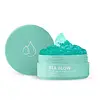What's inside
What's inside
 Key Ingredients
Key Ingredients

 Benefits
Benefits

 Ingredients Side-by-side
Ingredients Side-by-side

Water
Skin ConditioningDimethicone
EmollientGlycerin
HumectantButylene Glycol
HumectantAmmonium Acryloyldimethyltaurate/Vp Copolymer
Ethylhexylglycerin
Skin ConditioningPhenoxyethanol
PreservativeLinoleamidopropyl Pg-Dimonium Chloride Phosphate
Ammonium Acryloyldimethyltaurate Crosspolymer
Emulsion StabilisingDimethicone Crosspolymer
Emulsion StabilisingAcrylates/Beheneth-25 Methacrylate/Hema Crosspolymer
Emulsion StabilisingCaprylic/Capric Triglyceride
MaskingHyaluronic Acid
HumectantNiacinamide
SmoothingSodium PCA
HumectantXylitylglucoside
HumectantAnhydroxylitol
HumectantXylitol
HumectantAlpha-Arbutin
AntioxidantFragaria Vesca Fruit Extract
AstringentCI 42090
Cosmetic ColorantCI 16035
Cosmetic ColorantWater, Dimethicone, Glycerin, Butylene Glycol, Ammonium Acryloyldimethyltaurate/Vp Copolymer, Ethylhexylglycerin, Phenoxyethanol, Linoleamidopropyl Pg-Dimonium Chloride Phosphate, Ammonium Acryloyldimethyltaurate Crosspolymer, Dimethicone Crosspolymer, Acrylates/Beheneth-25 Methacrylate/Hema Crosspolymer, Caprylic/Capric Triglyceride, Hyaluronic Acid, Niacinamide, Sodium PCA, Xylitylglucoside, Anhydroxylitol, Xylitol, Alpha-Arbutin, Fragaria Vesca Fruit Extract, CI 42090, CI 16035
 Reviews
Reviews

Ingredients Explained
These ingredients are found in both products.
Ingredients higher up in an ingredient list are typically present in a larger amount.
Glycerin is already naturally found in your skin. It helps moisturize and protect your skin.
A study from 2016 found glycerin to be more effective as a humectant than AHAs and hyaluronic acid.
As a humectant, it helps the skin stay hydrated by pulling moisture to your skin. The low molecular weight of glycerin allows it to pull moisture into the deeper layers of your skin.
Hydrated skin improves your skin barrier; Your skin barrier helps protect against irritants and bacteria.
Glycerin has also been found to have antimicrobial and antiviral properties. Due to these properties, glycerin is often used in wound and burn treatments.
In cosmetics, glycerin is usually derived from plants such as soybean or palm. However, it can also be sourced from animals, such as tallow or animal fat.
This ingredient is organic, colorless, odorless, and non-toxic.
Glycerin is the name for this ingredient in American English. British English uses Glycerol/Glycerine.
Learn more about GlycerinPhenoxyethanol is a preservative that has germicide, antimicrobial, and aromatic properties. Studies show that phenoxyethanol can prevent microbial growth. By itself, it has a scent that is similar to that of a rose.
It's often used in formulations along with Caprylyl Glycol to preserve the shelf life of products.